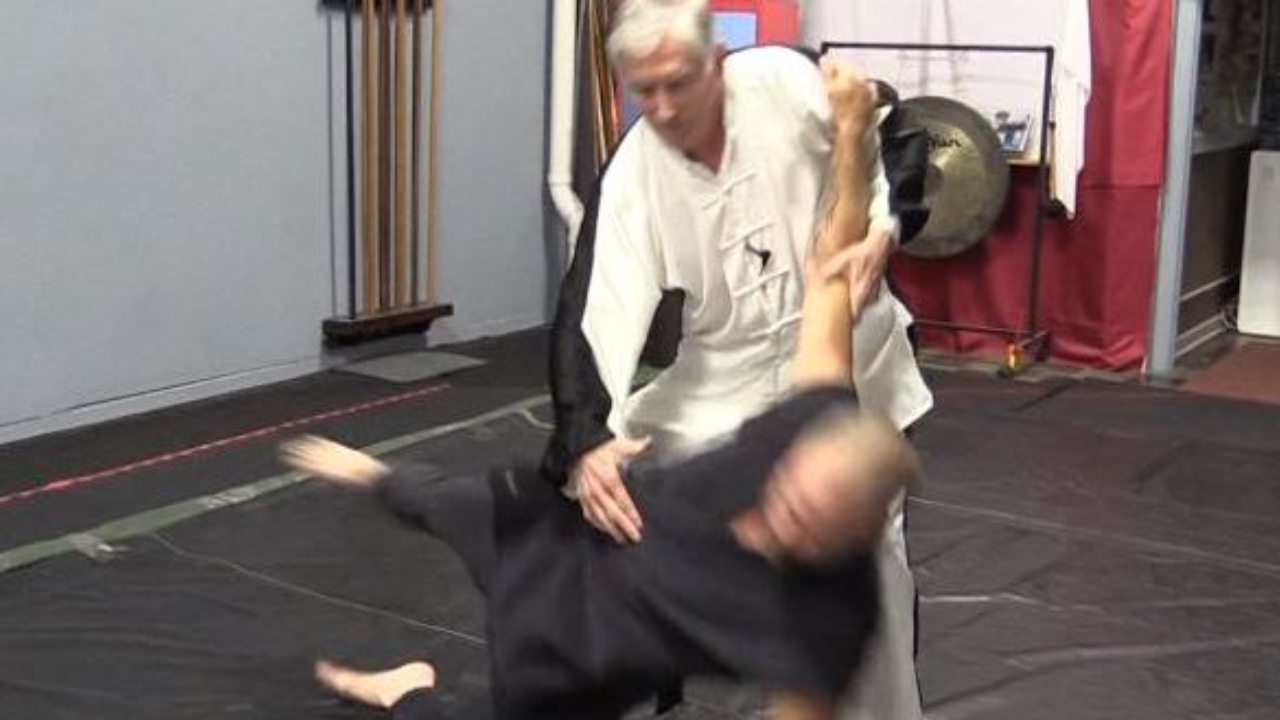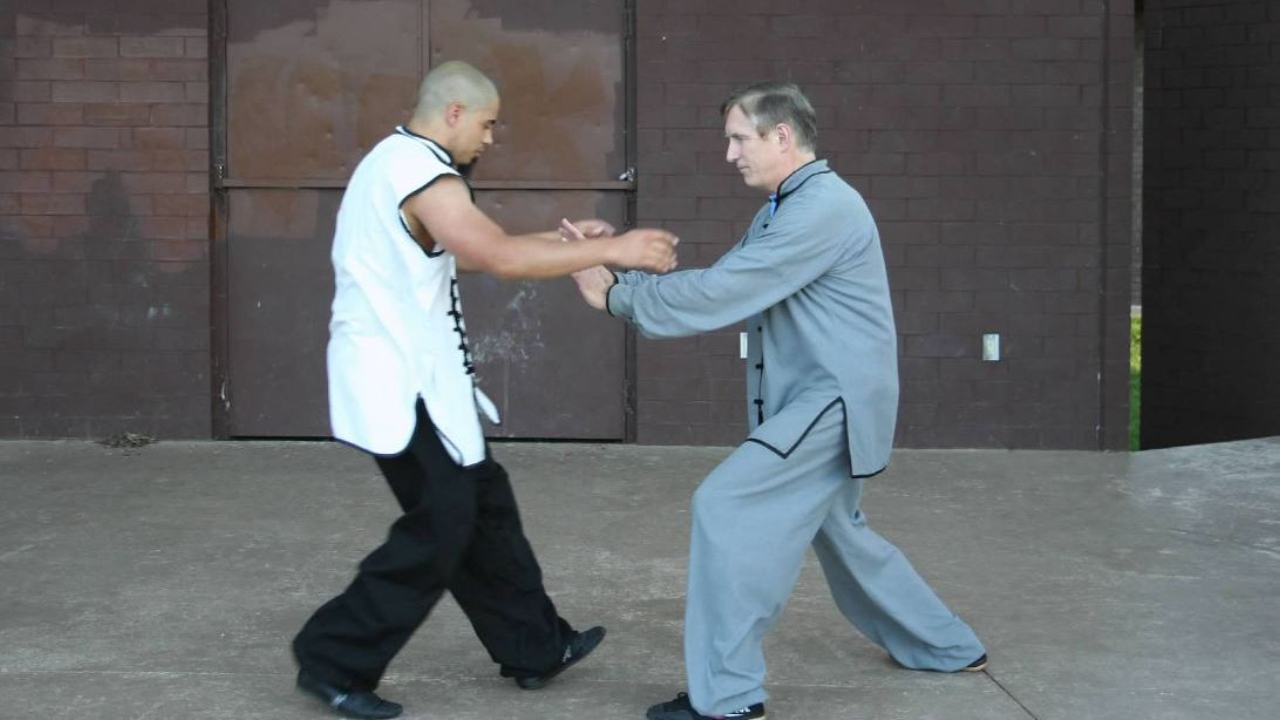The Hazards of Training Too Hardcore

I ran into a kung-fu guy that I hadn't seen in at least a year. He's young (around 30), strong -- and I asked where he had been. He moved to Chicago a while back and he told me he had started training with a martial artist who "trains real hard" with his students. He said that as if hardcore training was something to be proud of.
How's that going, I asked. He replied that they trained so hard, he had broken his foot and fractured several ribs.
He hasn't trained in over a year.
What? I mean, WHAT?????
There is a big segment of the population now -- the ones who would have been training in kung-fu, karate and TKD schools back in the 1970's -- who now believe that the only "real" martial arts are the MMA and UFC type.
Let me make a point that I've made many times. You don't have to hurt someone, or be hurt yourself, to learn how to be a good fighter. It's a myth fueled by youth, testosterone, and frankly, being a dumbass.
That doesn't mean there isn't a certain amount of pain you ha...
How Many Forms Do You Need to Know?

Bruce Lee said, "I fear not the man who has practiced 10,000 kicks once. I fear the man who has practiced one kick 10,000 times."
This is a profound statement, but I don't know very many Americans who practice the principle behind it. I see it in my students, and I've seen it in myself -- the quest to learn more forms, thinking that it means we're good at what we do.
But learning more forms doesn't make you good.
Oh sure, we can win trophies at tournaments. We can put our art up against our peers and bring home some hardware. And tournaments are good for marketing, but you take a first place performance at most American tournaments to the Chen Village and you'd be considered a rank beginner. Let's not kid ourselves.
In the Chen Village, it is said that students may spend 10 years practicing only Laojia Yilu. Ten years before they are allowed to practice another empty hand or weapons form.
How well do you think they can perform Laojia Yilu at the end of that time?
A little over a ...
Practicing Forms is Like Playing a Musical Instrument

I practiced 10 forms this evening, as the sun was going down and the shade began to deepen in our backyard.
I've been practicing some of these forms for 23 years, but had to occasionally stop and practice a movement a few times until it felt right. Once or twice, I would skip a movement, realize it a few seconds later, and have to go back and start again until I got it right. Then I would repeat the form to make sure the part that I had skipped was firmly in my mind again.
As a child -- around age 7 -- my mother had me take piano lessons. My teacher told me that concert pianists who have practiced all their lives can feel it if they skip one day without practicing. The best artists practice every single day.
Five decades later, I understand that the same is true for martial artists. We express our art with our bodies, creating beautiful movement that has specific body mechanics at their core, and a potentially deadly meaning hidden inside circular and sometimes flowery movements.
F...
Wuji - An Important Principle of Balance and Harmony in Tai Chi

In Taoism and Chinese culture, the term wuji (pronounced "woo-zhee") means a state of harm ony and balance -- emptiness, stillness and peace. It is limitless, infinite.
It is when everything begins moving and you lose balance that you also lose wuji.
In the Taoist view of the universe, if we were to look at it from a modern scientific view, the universe was in a state of wuji just before the Big Bang. There was a state of perfect peace and then all hell broke loose. Things separated into yin and yang. Dogs and cats living together -- MASS HYSTERIA! (Sorry, I watched Ghostbusters a lot when my daughters were little)
In Tai Chi, the goal is to maintain a sort of wuji -- balance and harmony; to remain centered. When someone attacks, and you must adapt and change to accept this person's force, your goal is to return to wuji -- the state of balance you were in before the attack.
I enjoy working with people who have never studied the internal arts. Almost every time when a newbie is wo...
Moments of Vulnerability - A Strategy for Self-Defense

If you're ever in a situation that calls for you to defend yourself, it's a complex situation that calls for you to make several fast judgements before taking action.
Connecting with your opponent is essential, but it takes a lot of practice to be able to remain calm enough to do this. You need to quickly understand his mental state, his quickness, his timing, the rhythm of his movements, and when he is deciding to attack.
Martial arts theory can become complicated. In a self-defense situation you must quickly determine your proper distance from the opponent -- this will depend upon his speed and your speed, your reflexes or ability to reach the opponent with your techniques. You must determine your opponent's timing compared with yours, and the intervals that happen between techniques. And finally, you must assess the rhythm that your opponent is using and how you can disrupt or take advantage of that rhythm.
With all this going on, there are moments of vulnerability happ...
What it Takes to Succeed in Martial Arts

On Saturday, Alex drove three hours from Milwaukee for a private lesson (pictured above). We worked in my basement for three hours and then he drove home. A 9-hour day for Alex. In the photo at left, I'm working with him on establishing and maintaining the ground connection--step one in learning the internal arts. We went through several of these exercises, plus peng jin, silk-reeling and whole-body movement. It was a lot of fun and I could tell he learned a lot.
I admire someone who does this. Alex has been a member of the online school, and he had the Internal Strength DVD, but he wanted to understand it better so he spent a day traveling to my home for some hands-on training and correction.
This is what it takes to succeed, and I admire someone who goes to that kind of time and effort.
It isn't easy finding good teachers to study Tai Chi with, and that's why--in 1998--I began making a 4-hour round trip to study on a regular basis (sometimes twice a week) ...
A Sneaky Technique for Unbalancing an Attacker

On Saturday, we practiced various techniques for unbalancing an attacker. Some were very subtle and will be covered in future posts and videos.
Here's the concept -- you take your opponent in the direction he wants to go. You can help the process along by making slight adjustments and adapting to the way he moves so that you can take advantage of they way he is moving.
Sometimes it only takes a push on his calf with your shin to make his rear shoulder turn every so slightly -- but enough for you to grab and help the shoulder continue moving in that direction, causing your attacker to lose balance even more and hit the ground.
In the photos here, Leander Mohs is attacking Chris Miller. You see him step in with a punch. Chris deflects the punch and puts his right foot behind Leander's left foot and slides it back toward him. This unexpected move causes Leander to lose balance and he turns, trying not to fall on his back. The result puts him in a vulnerable position and Chris c...
Congratulations on Promotions for Chris Miller and Kim Kruse

Congratulations to Chris Miller and Kim Kruse on successfully promoting to the next level in our kung-fu system of internal arts.
Chris Miller has studied for more than three years and is now second degree brown sash. He is two tests away from black sash. During the brown sash levels, he is studying the basics of baguazhang.
Kim Kruse was promoted to blue sash, in the intermediate studies that focus on the basics of Chen tai chi. She has learned the Chen 19 form and is currently working on the Chen 38, push hands, and other parts of the curriculum. After this level, she will reach purple sash and study the Chen broadsword form and other material.
In the system I teach, students learn the basics of Hsing-I in the first three levels, Chen Tai Chi in the intermediate levels, and Bagua in the advanced levels. At black sash, you study more advanced forms and techniques in each of the three arts.
By the time a student reaches black sash, he or she has also learned forms and fighting w...
Albert Einstein Teaches A Lesson on the Internal Martial Arts

A story is told about Albert Einstein. He had just given a test to a class of seniors, and he was walking across campus, followed closely by an assistant.
"Dr. Einstein," the assistant said, "you just gave the same test to this year's class that you gave to last year's class."
"Ya, ya," Einstein replied. "It was the same test."
"But why would you give the same test two years in a row?"
Einstein said, "Because the answers have changed."
I had to laugh when I heard this story because it sums up how I feel about the internal arts. I suppose it should be true for anyone studying any art.
Studying tai chi, hsing-i and bagua is like trying to reach the bottom of a bottomless ocean. Just as you think you've made progress, you realize that the ocean just became deeper, and in reality, you've only just begun your journey.
If someone had asked me 10 years ago how to perform "Buddha's Warrior Attendant Pounds Mortar," the second movement of many Chen tai chi forms, I would have given an a...
How Do You Accept Coaching from Your Martial Arts Teacher?

I spent over two decades in the news business. I started on the high school paper and then worked on my college newspaper before going into broadcasting professionally for 22 years.
When I got into my first real news job, I realized quickly how little I was told in school about how it really was -- how to see national news stories and tie them into the local impact -- how to write in an interesting way to the audience -- how to select stories based on your audience and the most important thing of all -- what does it mean to your audience?
As a young reporter, radio and TV anchor, and producer, I was rarely given any advice or input from my supervisors. I had to learn everything the hard way, and it took years for me to develop into a decent TV journalist. Since I had no mentor, I studied the best people I could see. I listened to Walter Cronkite's delivery, I studied the production techniques of cutting-edge shows (at the time) like "48 Hours." And when I worked in local newsrooms th...
